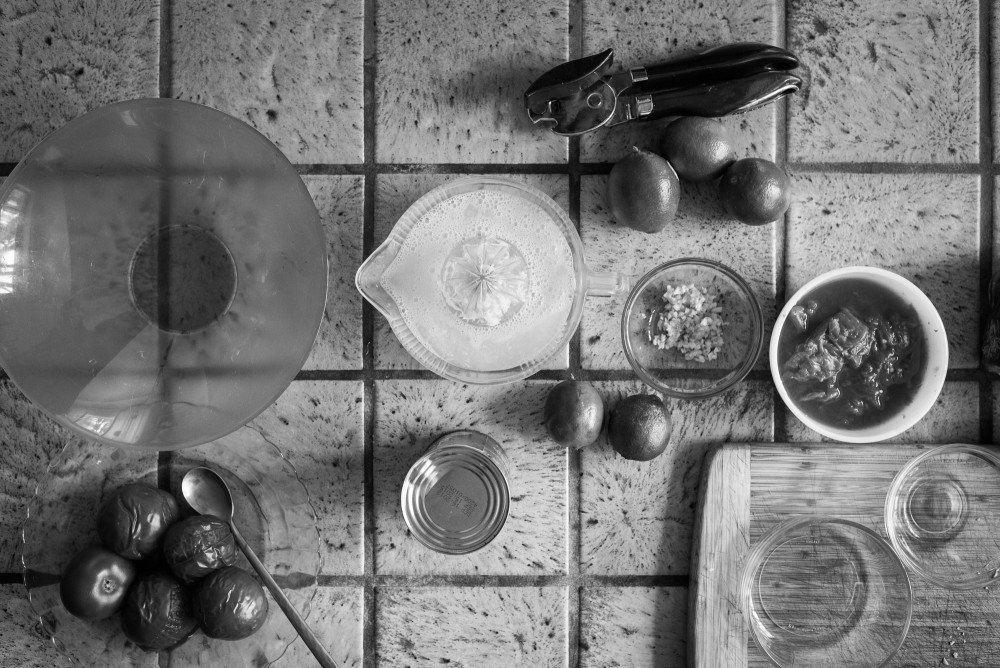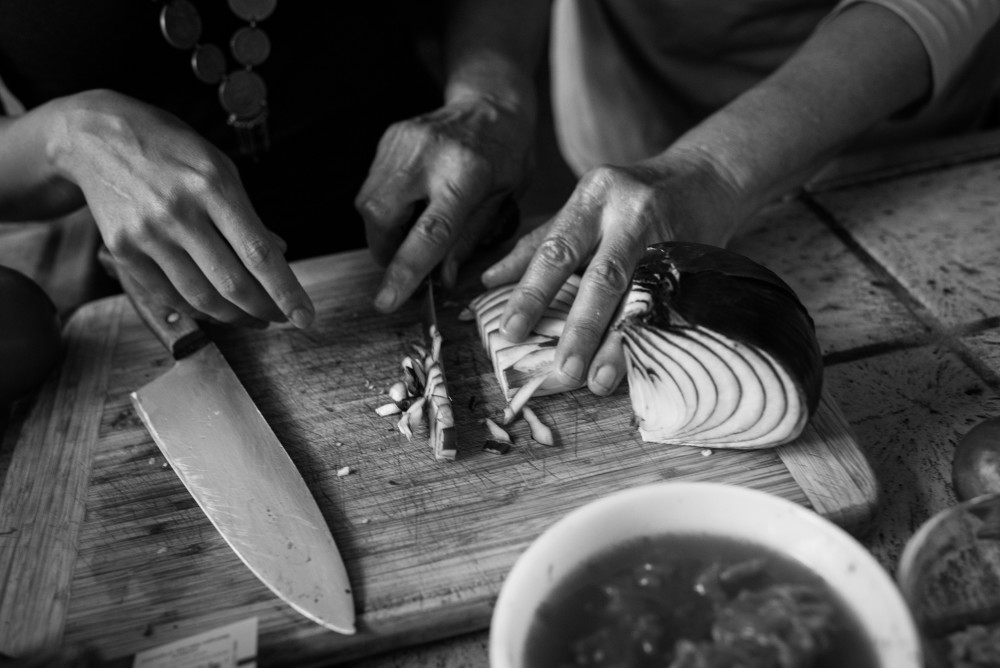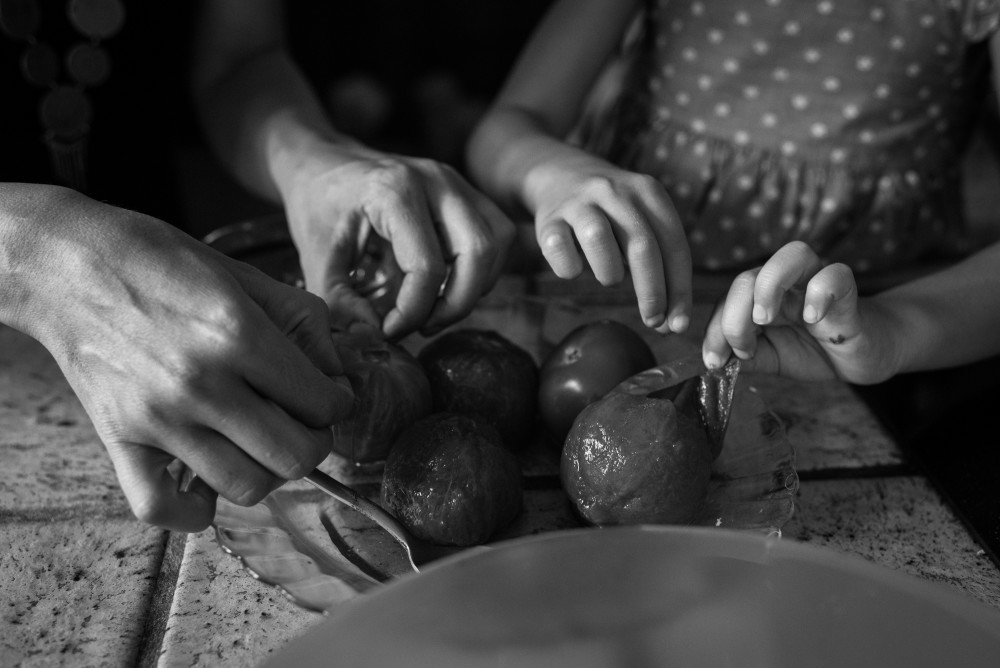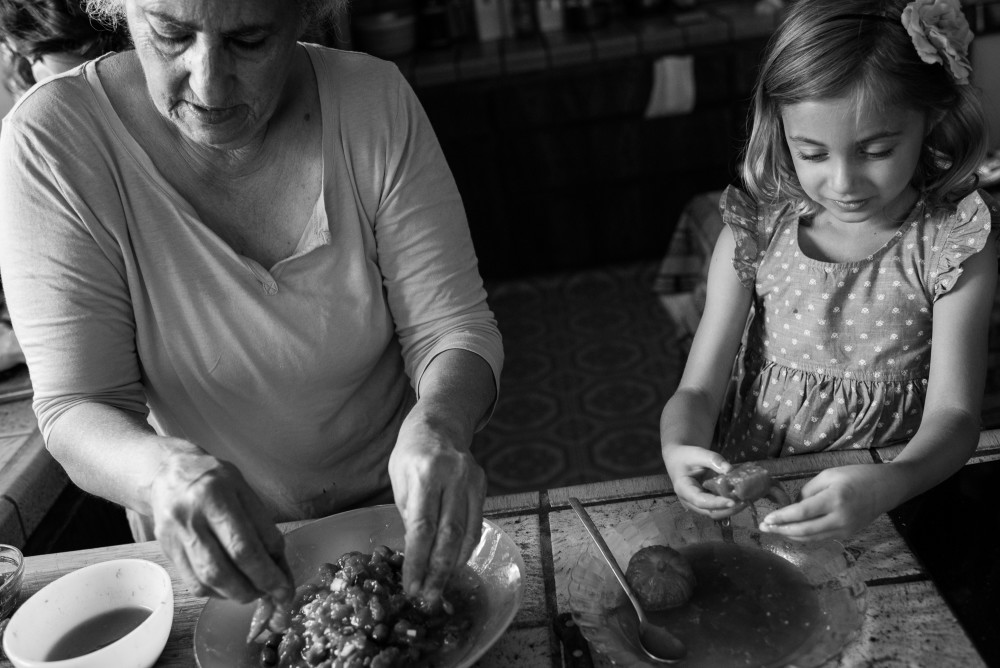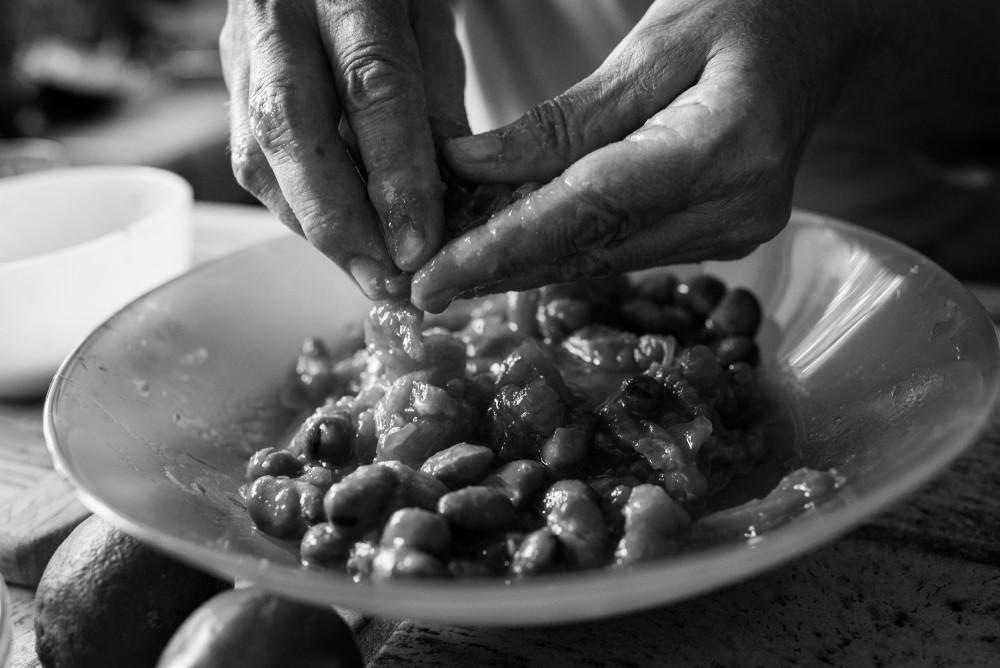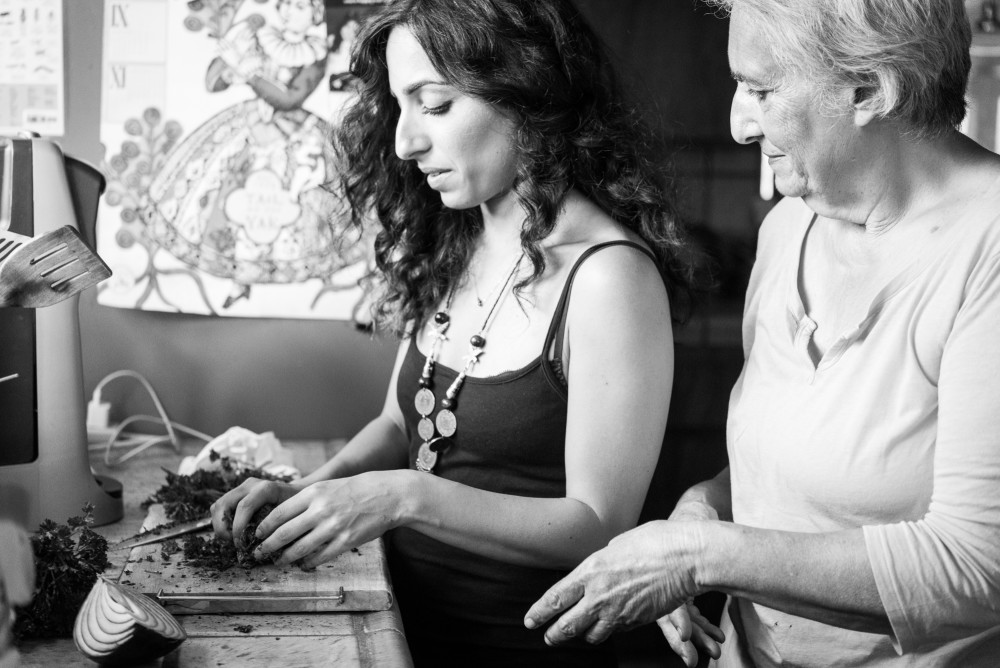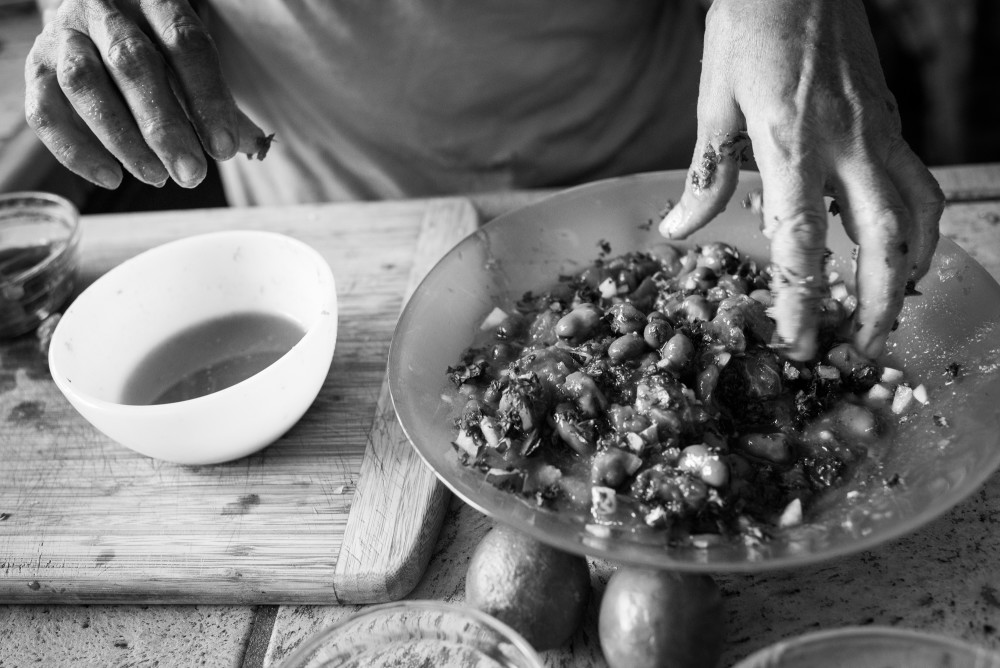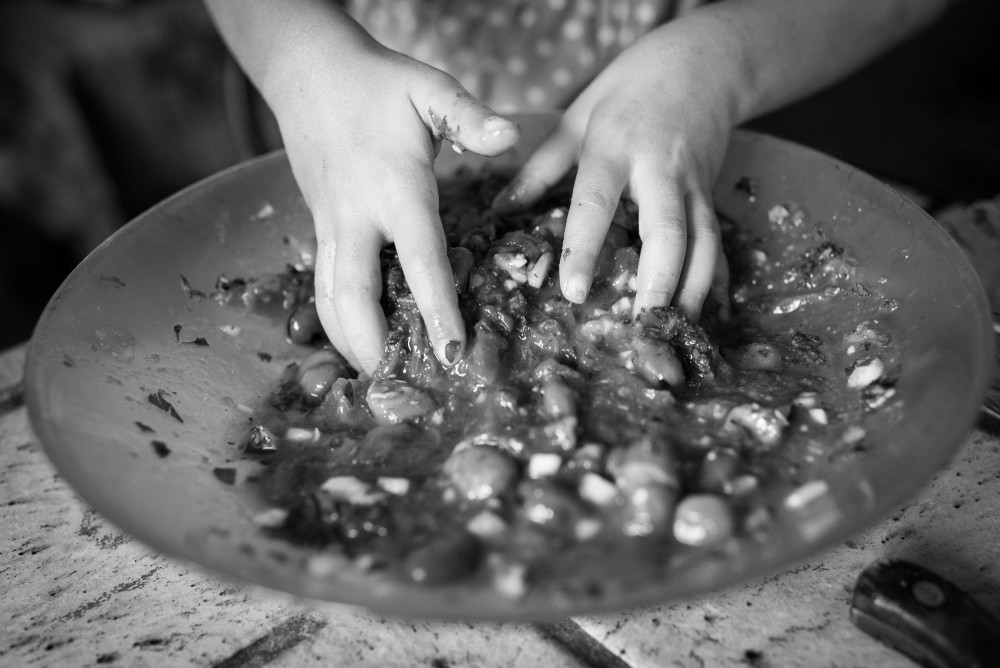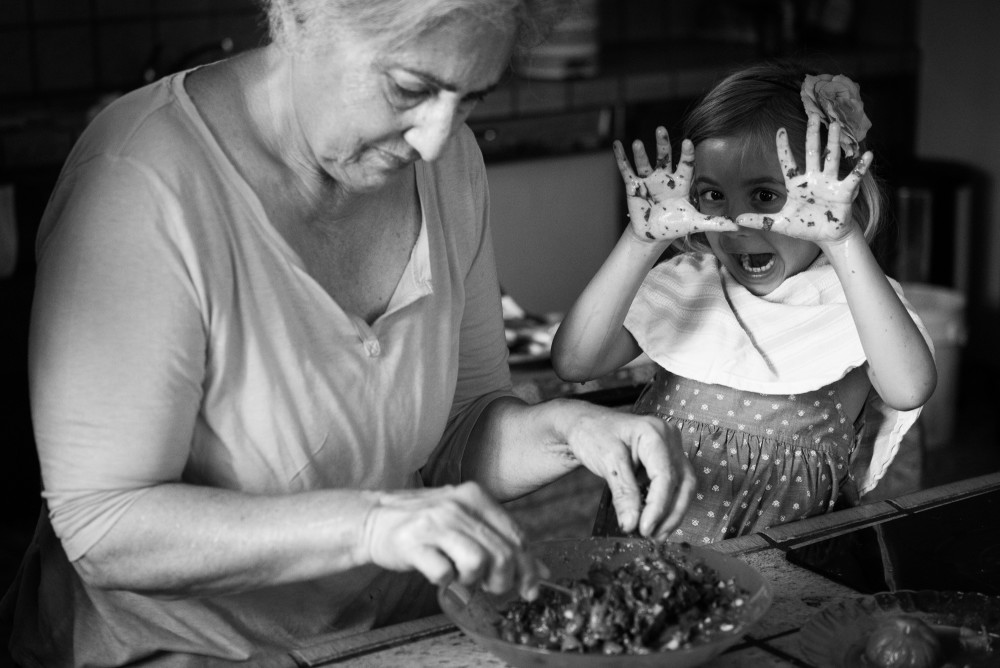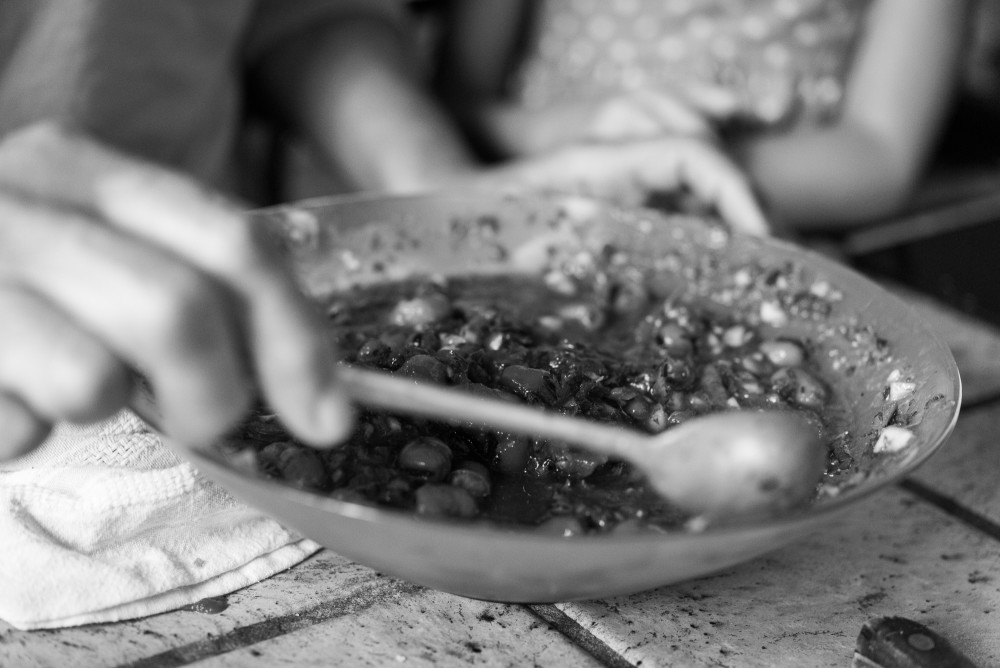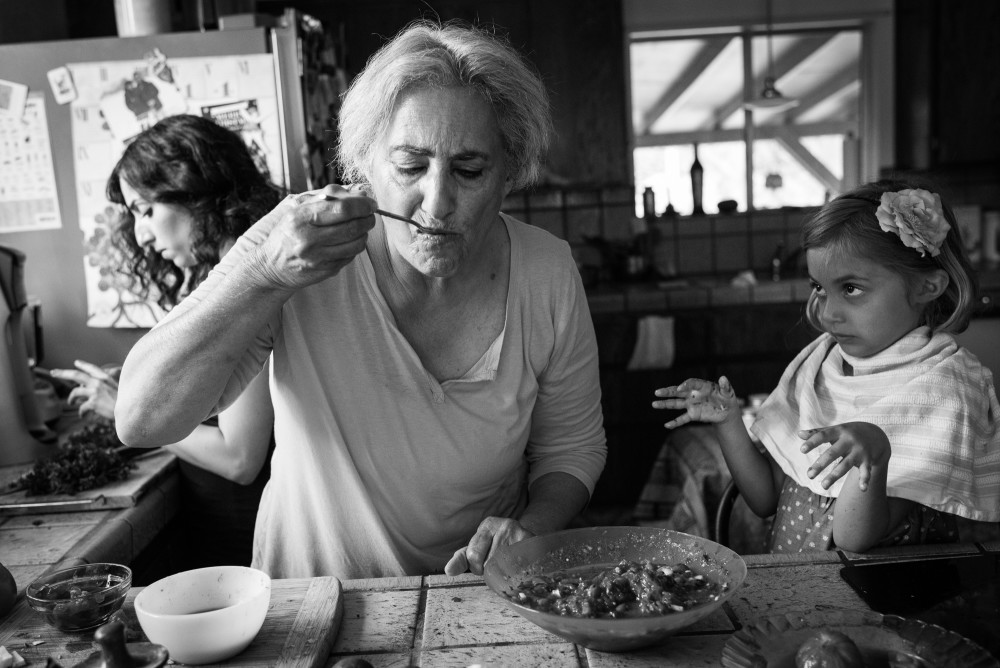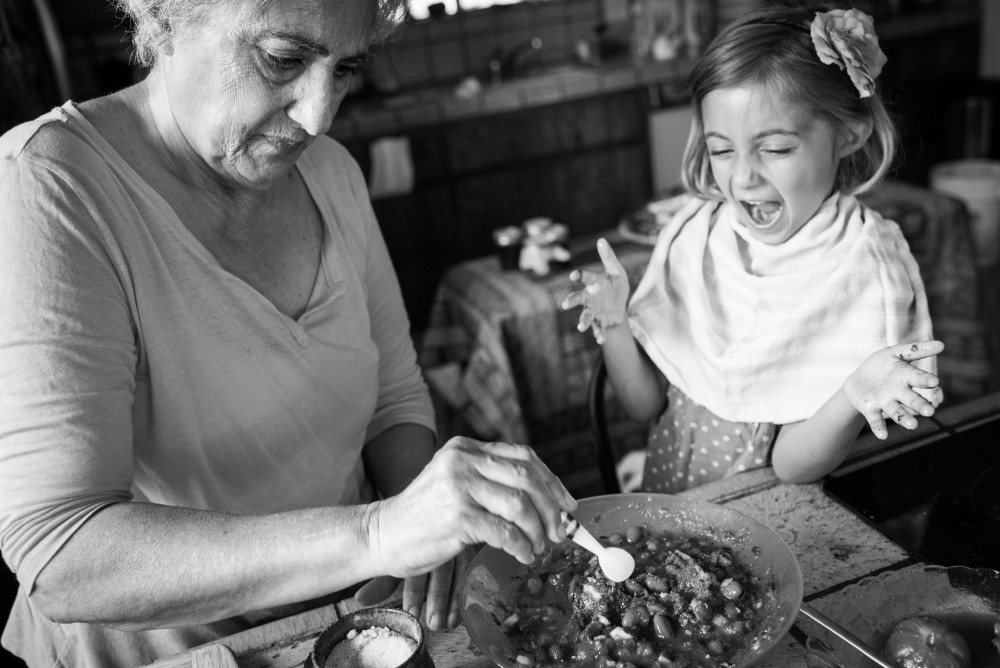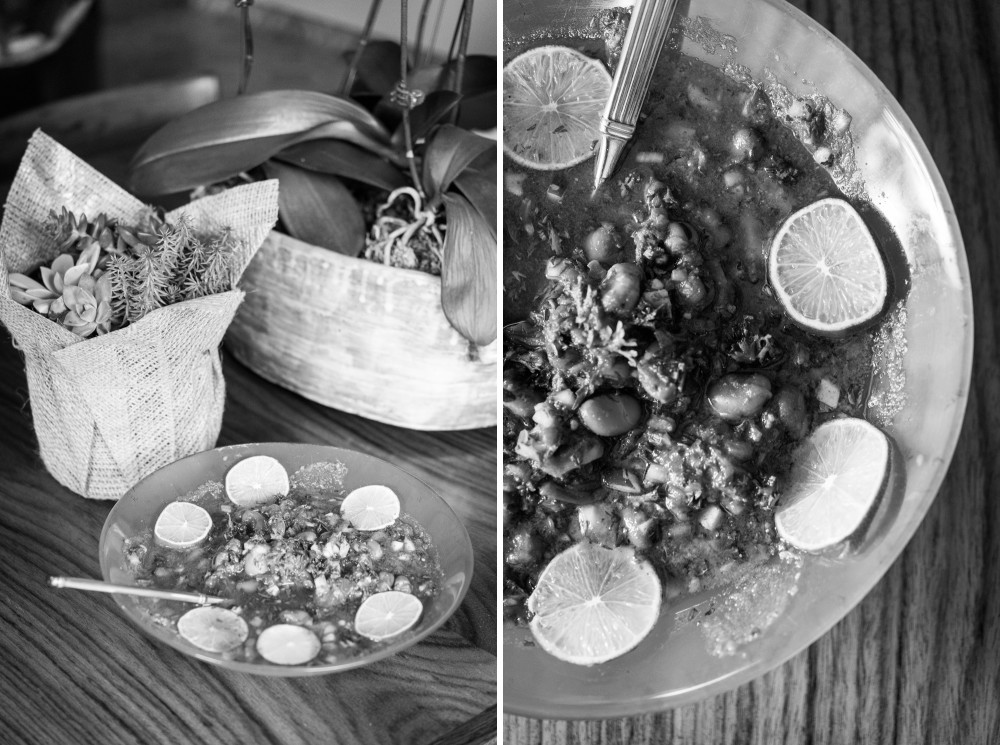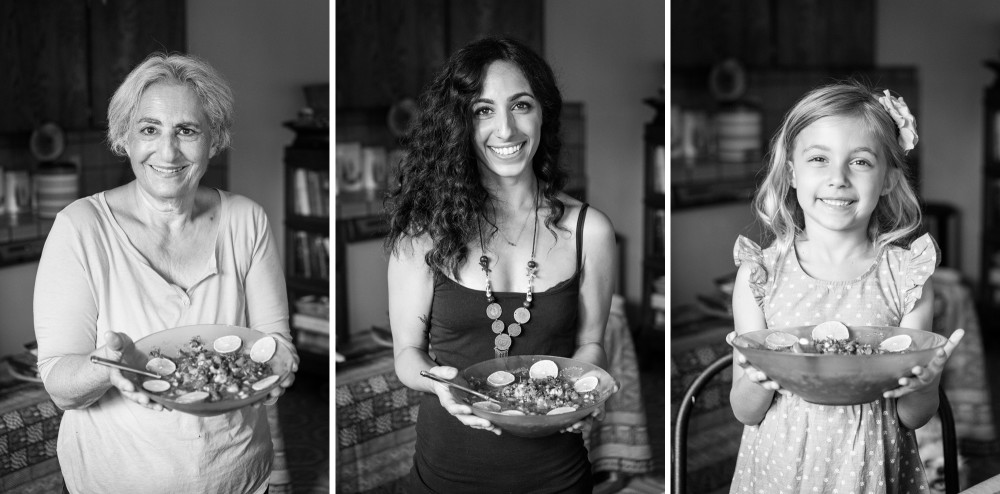In the Kitchen with the Chavoor Family

Kathleen (pictured right) is someone I’ve called a friend for a few years now. Most of our shared time has revolved around food – maybe an occasional conversation about relationships, or art, but mostly food. I’ve held great respect for the ways that she explores her own history and heritage, and how she shares those with her daughter Violet, so I asked Kathleen to participate in a reboot of a project I started several years back, aimed at preserving family traditions through cooking together, across generations. She invited me over to her aunt Ani’s house to make ful, a simple fava bean dish that’s perfect for large gatherings.
“I’m an ad hoc cook,” Ani explained soon after welcoming me into her kitchen. “I put a recipe together for this because people have asked me. I’ve taken it to so many places, and people love it: I’ve taken it to potlucks. I’ve taken it to family holidays. I’ve taken it to my gallery studio for ArtHop. I’ve taken it to graduations…I’ve taken it a lot of places.” I asked Kathleen about the dish. “When I think of ful, I think of a big family gathering, with a table blanketed in food; a harmonious spread of Armenian and middle eastern dishes from that region. I hear a choir of my family’s laughter and chatter that brings the food and event to life.”
“Food is the center of every family event. The dishes we create and share together form a bond between the new and the old worlds – between life here in Fresno, and life in Aintabsi, the Armenian village where we came from (now in modern day Turkey).”
“Violet loves the process of creating meals, and we do it as often as we can. I really enjoy cooking traditional Armenian meals with her because it gives me a chance to share about our heritage within our cultural traditions – at Christmas we make madzoon ov kufteh, at Easter we make choreg, and we’ve made an Arabic traditional bread called mana’esh.”
For me, preserving our family’s recipes is an intentional move away from assimilation, and one the most tangible ways to pass our heritage on to future generations.
“I chose Aunt Ani for this because she has personal elements of spicy and sweet – she will tell it like it is, but she’s been a great source of comfort and care for me. Ani is our family’s matriarch and remembers life in Israel and Jordan, and everything leading to our family’s arrival to the United States; she’s one of the biggest connections I have to understanding where I come from.”
“She’s an everyday bad ass.”
Ani’s Recipe for Ful (or Foule, or Fūl)
“Dried and reconstituted fava beans are eaten in various ways all over North African and the Middle East. In Palestine, they are eaten warm with olive oil and a little garlic for breakfast. The following is my version. It can be eaten as a cold salad or side dish, or warm. As I don’t actually use a recipe, you can add more or less of any of the ingredients. The lime juice is key, however.”
Ingredients
- 1 can fava beans, rinsed and drained 1
- 1/2 onion if sweet, less if not, diced or thinly sliced. End of summer red onions are great
- 4-5 tomatoes, peeled if you like, and cut as you would for a green salad
- 1/2 cup fresh mint (or more), finely cut
- 1/2 cup parsley, not so finely cut
- Salt
- Aleppo pepper, or another spicy pepper if not available
- Juice of 3 or more limes
- 1/4 cup or more olive oil
- Garlic to taste
1 Sultan brand’s “foule mudammas” are pictured here
Instructions
“You start with the favas because you can’t add anything else to those.” As in, they’re the base, and everything else is by feel; to taste. Mix all ingredients together in a large bowl, testing the flavor as you combine the ingredients with your hands. While you can eat it right away, refrigerating for a few hours (or overnight, if preparing ahead of a gathering), allows the lime juice to settle into the beans. “Replace the fava beans with about two cups of roasted and chopped eggplant and you have other equally delicious dish.”
Ani offers a few other other pointers. “Normally we’d use lemon instead of lime, but I found lime, and I like it better. Because we’re going to add olive oil to the lime juice, I try not to include too much of the juice from the tomatoes.” As to a preference for fresh tomatoes? “In the summer, yes. In the winter, stewed canned tomatoes, because they just taste better. And if these were less ripe, they’d be diced.”
Ani topped the mixing bowl with a few slices of lime before serving. “In my family, we don’t garnish anything.”
Want to preserve your family’s history?
Recipes and photos go a long way, and I’d love to help you collect both. Tell me a little more about the meals you share together, and I’ll reach out about opportunities to participate in this project.


